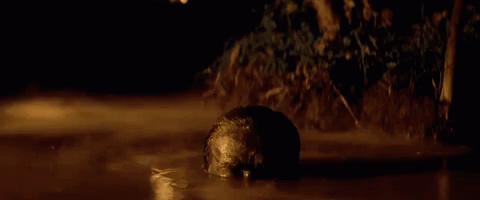Click to view our Accessibility Statement or contact us with accessibility-related questions



















Showing 1 of 7 conversations about:

Citizen BM7390 Eco-Drive Watch
tnghiem
17
Nov 7, 2019
I don't understand the point of having compass markings on the watch. Are they just for looks?

Kizer
116
Nov 8, 2019
tnghiemYes - just for looks; totally useless. If you could move the ring with the compass markings on it, then that would be useful. Some watches you can.
RayF
22220
Nov 8, 2019
tnghiemNo, not just for looks. Pay no attention to that foolish @Kizer fellow.
The markings on a free rotating compass style bezel, are quite useful (especially if you have nothing else at your disposal), for finding approximate North and South.
Lots more information here:
How to use a compas on a watch
(Edited)

Dmanjapan
Nov 8, 2019
RayFYou were a boy scout weren't you. Definetly helpful. Unsure about the trustworthy though...
RayF
22220
Nov 8, 2019
DmanjapanBack then yeah; Special Ops Scouts--but I still stay frosty.


tnghiem
17
Nov 8, 2019
RayFBut this watch doesn't seem to have a rotating bezel for compass?! Which Kizer pointed out. I suppose you can still use the hands as compass, but you can also do that without the compass ring. So it still is just for looks?

A community member
Nov 8, 2019
tnghiemIt’s pretty useless as a navigation device with or without a rotating bezel, it simply isn’t precise enough nor can you use it to follow a bearing.
You can find an approximate north or south but an actual compass allows you to shoot a bearing and then follow the bearing it whilst you walk. You can’t do this with a watch, even the seiko alpinist. You need a GPS watch, with an electronic compass or an actual, old school, needle pointing to north compass for nav.
imho, the compass gradations make this watch look too busy. A shame because it’s a very good watch for the money.
(Edited)
RayF
22220
Nov 8, 2019
tnghiemI'm guessing you'll get a better idea of exactly how a watch with compass bezel works by watching a few Youtube videos.
Meantime, if Chris Columbus would have had this watch with him, I say he still would have found the New World, still would have miss-named the indigenous peoples he found, and still would have brought STDs the the Western Hemisphere.
In your case however, there is an assumption that if you can afford a hundred dollar watch, you can also afford a decent quality, boy scout compass, or maybe even a nice GPS device to take along (with whatever watch you chose) before you go wandering off into the wilds of your local state park, or playing Indiana Jones somewhere in the Central American jungles.
One thing is for sure, if you do decide to go wandering off into the great wide open wearing only this watch, I guarantee you'll know what time it is when you get there!
(Edited)

kingping
107
Nov 8, 2019
tnghiemI'm pretty sure it's as simple as point the N towards North and it theoretically assists with one's orientation/mapping/trailwork.
RayF
22220
Nov 8, 2019
kingping


kingping
107
Nov 8, 2019
RayFYou're welcome.

BigFur
66
Nov 8, 2019
RayFYou just write pointless statements just because the internet is free... nothing rotates on that watch except the crown to change the time ;)

Dmanjapan
Nov 8, 2019
BigFurBwahaha. True. Very true.
RayF
22220
Nov 9, 2019
BigFurYou're certainly entitled to your opinions--and to piss up a rope while expressing them ;- )

Kizer
116
Nov 9, 2019
RayFDoes this watch have a rotating bezel?
RayF
22220
Nov 9, 2019
KizerNo one has claimed that it does, or that it's absolutely necessary.
In its simplest form the hour hand of any watch is pointed to the sun (not up in the sky, but in that direction as close to the horizon as possible). That establishes one compass point. Once that point has been established, the entire watch can be rotated to that point (for arguments's sake, let's say its North) such that the bezel's printed or engraved North, corresponds to that direction. At that point, the remaining three points (in this example S, W, and E) are also indicated. While not as precise as a true compass, the method is accurate enough to allow you find either the Pacific or Atlantic oceans, assuming you begin your journey in, Sayre, Oklahoma. An experiment I encourage you to undertake, at you earliest connivence.
Now stop bugging me about it and go watch a Youtube video on the subject.
(Edited)

Kizer
116
Nov 9, 2019
RayFDo you know if the compass markings on this watch are any use, considering that the bezel doesn't rotate?
(Edited)

Kizer
116
Nov 11, 2019
kingpingyou're half way there. The problem is you have to find north first (or South if you're in the Northern hemisphere). You can do this with your watch if it is set to the correct time, and not to daylight savings time. You also need to be able to see the sun, so no good at night time or on overcast days. The fixed bezel on this watch will only confuse things, unless it's 12 midday and you're in the southern hemisphere. For anyone in the Northern hemisphere, it will never be right, unless you get the midnight sun. The compass markings on this watch are only for fashion, or more likely, to give the illusion that the wearer is an outdoors adventurer. A rotating bezel will help with better accuracy - esp between the cardinal points (NEWS). Watching a video will help - I'm only pointing out a couple of issues. Actually even a diving watch with a rotating bezel is the next best compared to a rotating bezel with compass markings - they're very handy because you can count the clicks between the hour hand and the 12, then halve those clicks to get South. This is what I do if my partner is navving; I can keep a loose eye on things and it keeps me familiar, albeit using North instead of South. Although after a while I get lazy because I generally know the directions in relation to the sun and the time of day and season (through winter the sun goes NE to NW for us in the Southern hemisphere). If you watch a video or two, you'll understand what I mean. One more important detail with using a watch as a compass; for me in the Southern hemisphere, I'd find North using the sun (and I'd point the 12 at the sun then bisect between the 12 and the hour hand). For anyone in the Northern hemisphere you'd find South using the sun (point the hour hand at the sun, then bisect between the hour hand and the 12).
Once you have South, then you know North is behind you. I subconsciously know where cardinal points are in relation to each other - if you don't, a mnemonic is useful. Never Eat Slimy Worms. This mnemonic gives you the the location of the cardinal points from any one known cardinal point - it works clockwise the same way that it is said. For example, if you're facing North (Never), 90 degrees to your right is East (Eat). Or, if you're facing South (Slimy), 90 degrees to your right is West (Worms). Another advantage of a compass is not having to remember that.
As wiley-quixote has already said you're really better off with a compass :) . A transparent (silva) compass is more accurate taking a bearing from a map, or a bearing from from a landmark, then lining it up on the map, and map work in general. Even orienting a map is a very useful thing. If you're atop a mountain you can orient the map then know where everything is from your view point, for example. I've also oriented maps in foreign cities where I'm not familiar with landmarks, usually when I need to know whether to turn left or right on a road intersection (road has the same name left and right). With a silva type compass you can easily allow for the difference between magnetic north and true north. A diving watch with rotating bezel has the more useful 60 minute timer that can also pull duty for compass points (N at 60, E at 15, S at 30, W at 45).
Using a watch is pretty accurate - I have no trouble with it so long as I can see the sun. Generally what happens (for me in the southern hemisphere) is I find North. Then I face the direction I want to travel in, according to my North. I take note of where the sun hits me while I'm facing the right direction, for example, at right angle to the left or just a bit behind my left shoulder. Then I go. If the sun starts getting behind me, or shifts around in front of me, I know I'm veering off (or the track is changing direction). As the sun moves you have to keep re calibrating this - say every 30 mins. This is what I do with compass or watch. It's usually to keep track of where I am on a track. I look at the track on the map and see there's a big direction change at a certain point. It's just another way of keeping track, along with time (I average 10 min per km on rough track - so after 30mins I should be about 3km further along on the map) and other features shown on a map (creek crossings, re entrants, track going up or down, slope climbing on my left side or dropping off on my right etc, dense bush, swamp - all those things you get off a map). Where you lose some accuracy, is relating a bearing to the map, or taking a bearing from the map. It does help to take the watch off your wrist for map use, and to hold it at arms length for more accuracy.
(Edited)

Kizer
116
Nov 11, 2019
RayFAnd RayF; with your explanation you will be up to roughly 90 degrees out. Pointing the hour hand at the sun only "establishes" where the sun is, lol. It is good that you know how to find the sun though.
South (if you're in the Northern hemisphere) is between the hour hand pointing at the sun and the 12. So, if it's 1800, then South would be at the 3. If it's 0600, then South would be at the 9. If you don't understand why it's a different reading at 0600 compared to 1800 (hour hand is at the 6 for both times), it's because the sun has changed position throughout the day. Before noon you go clockwise from the hour to the 12 to find the mid way point. After noon you go anti clockwise from the hour to the 12 to find the mid way point.
It's really something you need to practice to understand why this works; you might also begin to understand what you're trying to talk about :) For example, for your benefit (I assume you live in the northern hemisphere) I'm explaining this in reverse to what I know here, in the southern hemisphere. Although I did have to use my watch as reference - it's like doing stuff left handed.
It was an interesting exercise though :)
(Edited)